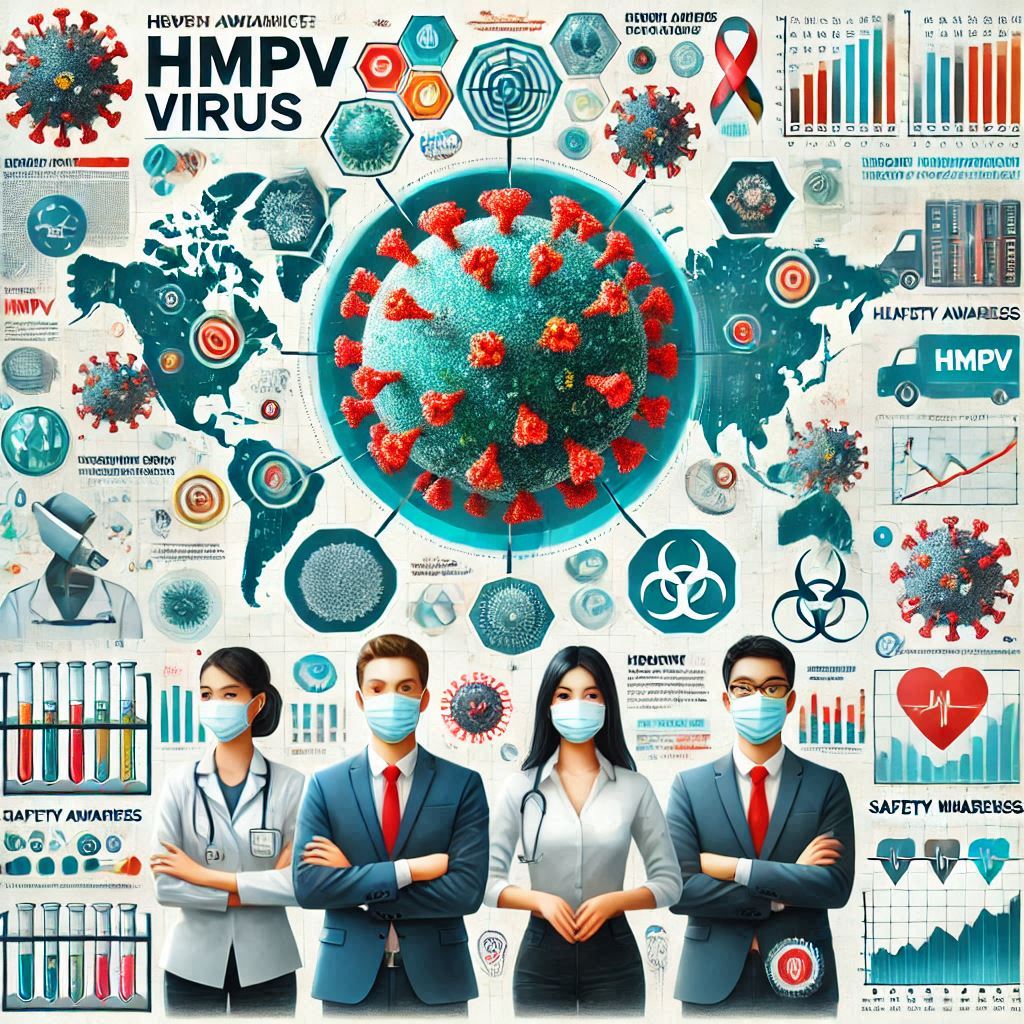
Workplace Safety Guidelines: Building a Safe and Healthy Work Environment in UK
Workplace safety isn’t just a checklist—it’s the foundation of a thriving, productive organization. A safe work environment protects employees from harm, boosts morale, and reduces costly employee downtime. Did you know that in the UK alone, 33.7 million working days were lost in 2023/24 due to work related ill health and injuries? So, as an HR professional, you’re not just enforcing policies—you’re shaping a healthier, more productive future for everyone.
1. Identifying and Assessing Workplace Hazards
Creating a safe workplace begins with knowing the risks. Every work environment has its own set of hazards, but understanding and addressing them is essential for protecting employees and maintaining productivity.
Common Hazards Across Different Work Environments
- Physical Hazards: Slips, trips, falls, and accidents involving machinery are among the most common risks in industrial and office settings. In the UK, workplace injuries cost businesses approximately £7.1 billion annually.
- Ergonomic Risks: Poor workstation setups or repetitive tasks can lead to musculoskeletal disorders. These account for 32% of all work-related health issues reported in the UK.
- Chemical and Biological Hazards: From handling toxic substances to managing exposure to infectious agents, these risks are common in healthcare, laboratories, and manufacturing environments.
Conducting Regular Risk Assessments
- Why Risk Assessments Matter: Identifying hazards early prevents accidents and costly downtime. Regular checks ensure that potential dangers are addressed before they escalate.
- Employee Involvement: Encourage employees to report risks—they’re the ones who see the problems firsthand. A reporting system that’s quick and simple shows you value their input and want to act on it.
By actively identifying and assessing workplace hazards, organizations not only protect their employees but also build trust and a proactive culture that prioritizes everyone's well-being.
2. Developing a Comprehensive Safety Policy
A strong safety policy serves as the backbone of a healthy work environment. It outlines clear guidelines, ensures accountability, and fosters a culture of responsibility. To be effective, a safety policy must go beyond generic rules and address the unique needs of your workplace.
Customizing Safety Protocols for Your Workplace
Every workplace is different, and so are its risks. By customizing safety measures to specific roles, tasks, and locations, you can better protect employees.
- Role-Specific Protocols: For example, factory workers may need protective equipment, while office staff benefit from ergonomic workstations.
- High-Risk Areas and Employees: Prioritize areas like construction sites or roles that involve handling hazardous materials. According to the UK’s Health and Safety at Work Act 1974, employers must assess and manage workplace risks to ensure employee safety.
Legal and Compliance Requirements
Understanding and following safety regulations is not optional—it’s a legal obligation.
- UK employers are required to comply with laws such as the Health and Safety at Work Act 1974, which mandates proactive measures to minimize workplace hazards.
- Non-compliance with health and safety regulations can lead to substantial fines, reputational damage, and even prosecution. For instance, in 2020/2021, the average fine per conviction was £145,000, with some fines exceeding £1 million.
A well-developed safety policy demonstrates your commitment to employee welfare while safeguarding your organization from legal and financial risks.
3. Creating a Proactive Safety Plan
Developing a proactive safety plan is essential for managing potential workplace hazards and ensuring a quick response to emergencies. By preparing for the unexpected, organizations can minimize risks and protect both employees and assets.
Emergency Preparedness and Response
Emergencies can occur at any time, making preparation vital:
- Evacuation Plans and Fire Drills: Design clear evacuation routes and conduct regular drills. In the UK, there were 259 fire-related fatalities in the year ending March 2023. Regular fire drills and clear evacuation plans are crucial in reducing such incidents.
- Crisis Response Protocols: Develop specific protocols for incidents like chemical spills or workplace violence. HR teams must ensure all employees know who to contact during emergencies.
Training and Education Programs
Preparation is only effective when employees are equipped with the knowledge and skills to act.
- Regular Safety Training: Safety isn’t a one-time lesson. Regular training sessions keep employees up to date on protocols, from handling equipment to reporting hazards.
- Practice Drills and Workshops: The best way to retain knowledge is through practice. Drills, role-playing scenarios, and interactive workshops ensure employees not only understand safety measures but also feel confident using them.
- Customized Programs: Training should address specific roles and risks. For example, warehouse employees may need forklift safety training, while office workers might focus on ergonomic practices.
Investing in proactive safety and training programs can significantly reduce workplace injuries and improve employee satisfaction. For instance, the Health and Safety Executive (HSE) reported that over 611,000 self-reported workplace injuries led to 4.7 million working days lost.
Implementing comprehensive safety training can help lower these numbers, fostering a more empowered and informed workforce.
4. Implementing Safety Measures and Protocols
Safety policies come to life through their implementation. Turning plans into daily practices ensures that safety becomes second nature for everyone in the workplace.
Daily Safety Practices
- Regular Safety Checks and Maintenance: From inspecting equipment to ensuring fire extinguishers are functional, routine checks prevent small issues from turning into major hazards. A consistent schedule keeps safety at the forefront.
- Proper Use of Personal Protective Equipment (PPE): PPE is only effective when used correctly. Train employees on the right way to wear gloves, helmets, or safety goggles to reduce risks significantly.
Health and Wellness Programs
- Encouraging Healthy Habits: A healthy workforce is a safe workforce. Offer wellness initiatives like healthy snacks, hydration stations, or mindfulness sessions to support employee well-being.
-
Mental Well-being: Addressing workplace stress is crucial, as it significantly impacts employee well-being and organizational productivity. According to HSE stress, depression or anxiety and musculoskeletal disorders accounted for the majority of days lost due to work-related ill health in 2023/24, 16.4 million and 7.8 million respectively.
Implementing initiatives such as mindfulness sessions and Employee Assistance Programs (EAPs) can effectively mitigate these issues, fostering a healthier and more productive work environment.
- Promoting Physical Activity: Inactive work can lead to long-term health problems. Offering on-site fitness classes, standing desks, or incentives for gym memberships promotes a more active workforce.
- Drug Testing for Workplace Safety: Drug testing is essential for workplace safety, reducing accidents and promoting productivity. In the UK, 1 in 11 adults aged 16-59 reported using illicit drugs, posing significant risks in professional settings. Substance misuse impairs judgment, increasing the likelihood of accidents and errors. Regular drug testing not only prevents such incidents but also fosters a culture of accountability and safety, ensuring a healthier, more secure work environment.
5. Employee Involvement and Communication
Safety is a team effort. Engaging employees in the process creates a sense of ownership and ensures that everyone is working toward the same goal: a safe, healthy workplace.
Creating Open Channels for Safety Feedback
- Encouraging Hazard Reporting: Employees are on the frontlines and often spot risks before anyone else. Empower them to report hazards without fear of retaliation and show appreciation for their input.
- Ensuring Prompt Responses: Feedback loses its impact if it’s ignored. Act quickly on safety reports to demonstrate that employee concerns matter and foster a culture of trust.
Transparent Communication on Safety Policies
- Keeping Everyone Informed: Employees should always know the “why” behind safety changes. Clear, regular updates on protocols help ensure compliance and reduce confusion.
- Guidelines for New Measures: When introducing new safety rules, use plain language, visuals, or step-by-step demonstrations to make them easy to follow. Accessibility is key to compliance.
A transparent approach creates a collaborative safety culture where employees feel heard, valued, and informed.
6. Monitoring and Improving Safety Measures
Safety is not a one-time effort—it’s an ongoing process. Continuous monitoring and adaptation keep your workplace safe as new challenges emerge.
Tracking Safety Performance and Incidents
- Collecting and Analyzing Data: Tracking workplace incidents, near-misses, and trends provides valuable insights. Are certain tasks more prone to accidents? Are new hazards emerging?
- Identifying Patterns and Risks: Use data to pinpoint recurring issues and implement targeted improvements. For example, if incidents increase in a specific area, focus your efforts there.
Regular Safety Audits and Reviews
- Conducting Periodic Checks: Scheduled audits ensure high safety standards are consistently maintained. Include inspections for equipment, processes, and even employee compliance.
- Revising Policies as Needed: Feedback from audits, employee reports, and new risks should inform updates to safety measures. Staying flexible and responsive ensures policies remain effective.
- The Role of Drug Testing in Continuous Safety: Drug testing is vital across industries to ensure a safe, productive workplace and mitigate risks linked to substance misuse. In the construction industry, around 15% of workers may face substance abuse issues, with one in five struggling with a substance use disorder. Healthcare professionals are also affected, with an estimated 10-14% having substance use disorders, and 50.3% of doctors in physician health programs misusing alcohol, while 36% misuse opioids. In law enforcement, one in four police officers has substance misuse concerns, highlighting the safety risks in high-stakes roles. The service industry faces one of the highest rates of substance use disorders, with 19.1% of workers in accommodations or food services reporting past-month illicit drug use. Implementing robust drug testing continues programs helps address these challenges, promoting accountability, preventing accidents, and ensuring the well-being of employees across these critical sectors.
By constantly monitoring, reviewing, and adapting safety measures, organizations ensure a safe environment where employees can work confidently and productively.
7. Case Studies: Successful Safety Initiatives
Incident
In June 2019, Jamie Anderson, a 35-year-old father, was killed when the forklift truck he was operating overturned at a depot in Newark. He was found trapped under the vehicle's roll cage after it clipped a kerbstone and overturned. Notably, he was not wearing a seatbelt at the time of the accident.
Outcome
The Barcode Warehouse Ltd was fined £500,000 and ordered to pay £7,039.55 in costs for breaching Section 2(1) of the Health and Safety at Work Act 1974. The Health and Safety Executive (HSE) investigation revealed that the company failed to enforce the use of seatbelts by forklift operators and lacked proper risk assessments regarding forklift operations.
Key Lessons:
- Enforcing the use of seatbelts for forklift operators is crucial to prevent fatalities.
- Comprehensive risk assessments and strict adherence to safety protocols are essential in mitigating workplace hazards.
Source: Press HSE Gov
2. Chorlton Express Transport Ltd Forklift Accident (Haulage, UK)
Incident
In November 2020, Ian Dawson, a 60-year-old forklift driver, was fatally injured while loading a heavy goods vehicle (HGV) at Chorlton Express Transport Limited in Oldham. The HGV moved forward during loading, causing the forklift truck to overturn. Mr. Dawson, who was not wearing a seatbelt, was trapped beneath the vehicle and died from his injuries.
Outcome
The company was fined £86,710 and ordered to pay £5,903 in costs after pleading guilty to breaching Section 2(1) of the Health and Safety at Work Act 1974. The HSE investigation found that the company failed to implement safe systems of work regarding vehicle movements and did not enforce the use of seatbelts by forklift operators.
Key Lessons:
- Implementing and enforcing safe systems of work for vehicle operations is vital.
- Regular training and strict enforcement of safety protocols, such as seatbelt use, can prevent fatal accidents.
Source: Press HSE Gov
3. FloPlast Limited Forklift Incident (Manufacturing, UK)
Incident:
A worker at FloPlast Limited in Kent, England, suffered severe injuries after being run over by a forklift truck. The accident was caused by the lack of segregation between pedestrians and vehicles in the factory. CCTV footage showed that safety measures such as designated pedestrian walkways and adequate vehicle management were absent.
Outcome:
The company was fined £400,000 under the Health and Safety at Work Act 1974. This fine underscored the legal obligation of employers to implement effective systems to protect their workers from foreseeable risks.
Key Lessons:
- Vehicle and pedestrian segregation is essential in industrial settings.
-
Routine audits can identify and address such hazards before they result in accidents.
Source: The Sun
Takeaways from These Cases
- Proactive Safety Measures: Regular assessments, training, and compliance checks are critical in preventing workplace tragedies.
- Investment in Safety: Neglecting safety protocols to cut costs can lead to catastrophic financial and human losses.
- Legal Accountability: Companies are legally obligated to ensure workplace safety, with severe penalties for violations.
These case studies demonstrate the irreplaceable role of a robust safety culture in safeguarding workers and preventing preventable disasters.
8. FAQs and Addressing Common Safety Concerns
A safe workplace thrives on clear communication and shared understanding. Addressing common questions and misconceptions about safety policies helps build trust and ensures everyone is on the same page.
Common Questions and Concerns
Q1: Why are regular safety drills necessary?
Safety drills prepare employees for emergencies like fires or evacuations. They help reduce panic during real incidents, ensuring everyone knows exactly what to do, which can save lives.
Q2: How does drug testing contribute to workplace safety?
Drug testing ensures that employees are fit for duty, especially in high-risk roles. Substance abuse can impair judgment and reaction times, increasing the risk of accidents. A drug-free policy not only protects employees but also reinforces trust and professionalism in the workplace.
Q3: What if employees feel uncomfortable reporting safety concerns?
Organizations should provide anonymous reporting channels, such as online forms or suggestion boxes, to make employees feel safe sharing their concerns. Recognizing and rewarding employees who report hazards further encourages transparency.
Q4: How can HR support employees struggling with mental health or stress?
Introduce wellness programs, provide access to counseling services, and foster a supportive culture where employees feel comfortable seeking help. Stress reduction is a crucial aspect of workplace safety and overall well-being.
Q5: How often should safety policies and procedures be updated?
Safety policies should be reviewed at least annually or whenever there are significant changes in the workplace, such as new equipment, processes, or regulations. Regular updates ensure relevance and effectiveness.
9. Conclusion: Commitment to a Safer Workplace
A safe workplace is built through teamwork and ongoing effort. By combining hazard prevention, employee collaboration, and continuous improvement, organizations create an environment where everyone thrives. Prioritizing safety shows commitment to employee well-being and sets the foundation for long-term success.







